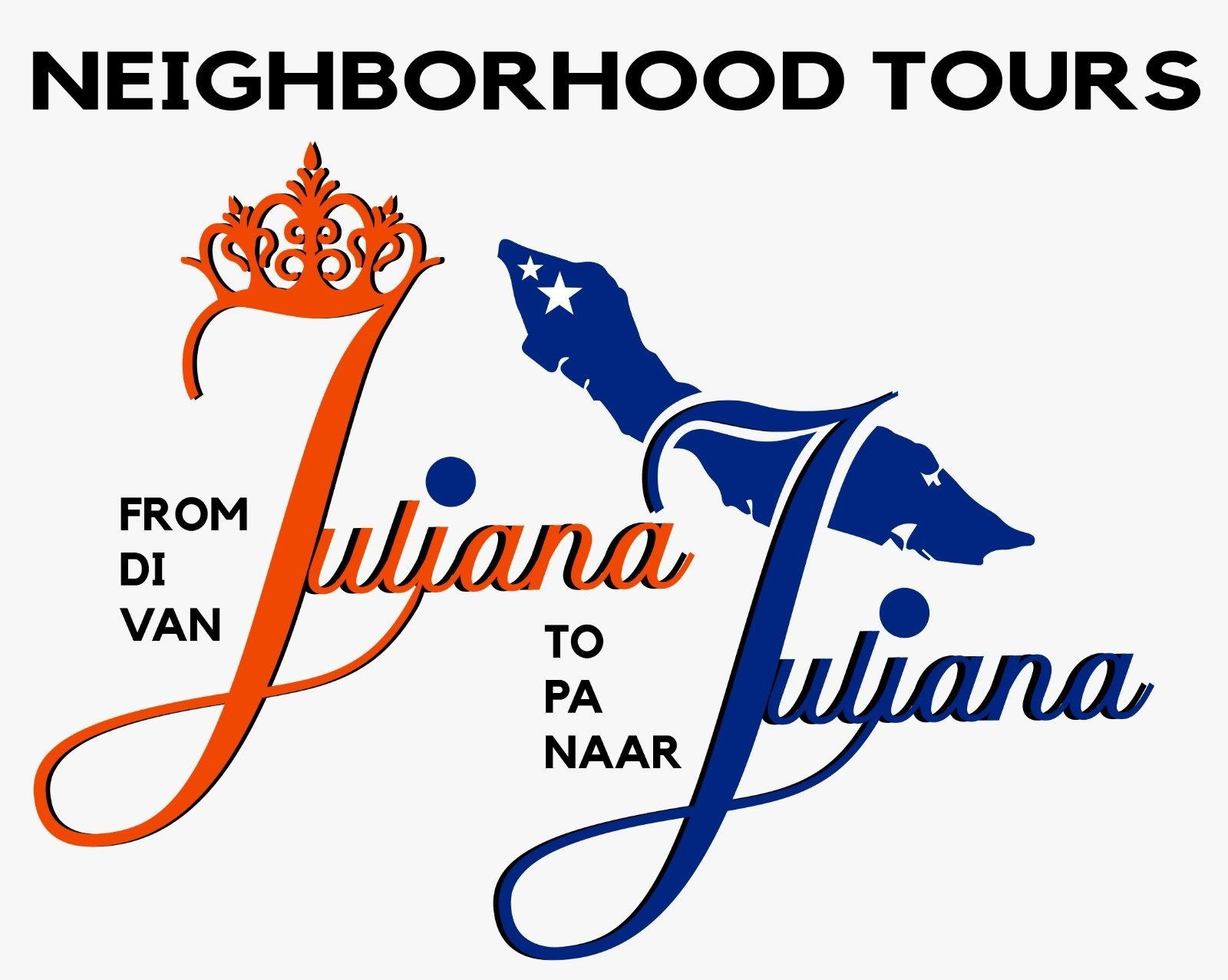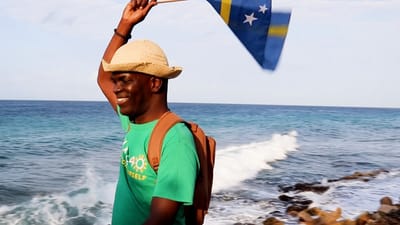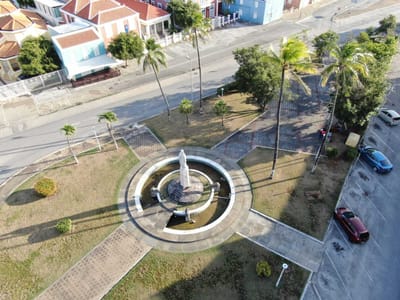Book a Tour Today

Welcome!
Welcome to the website of from Juliana to Juliana Tours!
We offer various guided walks through the Nieuw Amsterdam district. The route runs from Julianaplein to Julianaplein, but it is also possible to start at other places such as the various hotels along the route.
On the website, you will find background information and details about the possible tours.
We hope to meet you soon on one of our walks!
We offer various guided walks through the Nieuw Amsterdam district. The route runs from Julianaplein to Julianaplein, but it is also possible to start at other places such as the various hotels along the route.
On the website, you will find background information and details about the possible tours.
We hope to meet you soon on one of our walks!
FOUNDER

Know that without both, nothing moves.
The initiator Rensley Victoria from the Urban Walking Tour
“From Juliana to Juliana."
QUEEN JULIANA

Juliana, April 30, 1909 – March 20, 2004, was Queen of the Netherlands from September 4, 1948 to April 30, 1980. The inauguration took place on September 6, 1948. Juliana is of great importance to Curaçao (Netherlands Antilles) because she signed the Statute, which marked the end of colonial relations within the Kingdom, in December 1954.
As a princess, she already visited Curaçao at the end of the Second World War. During the Wartime years, she stayed in Canada and London. That first visit to Curaçao took place from February 26 to March 5, 1944. A year earlier, she had already opened the airport – Princess Juliana Airport – on Sint Maarten.
At the beginning of the war, 2 days after the invasion of the Netherlands by Nazi Germany - on May 10, 1940 - Juliana fled with her family by boat to England. When Germany also threatened to invade England, she and her daughters left by boat for Canada on June 2. Her husband, Prince Bernhard, stayed behind with Queen Wilhelmina, Juliana's mother, in London. At the beginning of September 1944, Juliana returned to London at the request of her mother, but left for Canada again in January 1945. On August 2, 1945 she finally landed in the liberated Netherlands.
She was crowned Queen of the Netherlands on September 4, 1948 and visited Curaçao - for the first time as head of state - in 1955, a year after the signing of the Statute of the Kingdom. Two years later, her statue was unveiled in Curaçao, on Julianaplein, just steps away from the National Archives. In Curaçao she was portrayed as “mother of all nationals”. Juliana herself had no objection to being addressed as ma'am instead of majesty, it was even her preference. Juliana's looser style reduced the distance between the royal family and the people.
In 1955, the Island Council of Curaçao decided to design a statue of the young Queen Juliana. Much to the chagrin of Governor Teun Struycken, the commission went to the Venezuelan-Italian sculptor Renzo Bianchini. He would much rather have seen a Dutch sculptor receive such a commission. “It is probably cheaper too,” he wrote in April 1956 in a “personal p.s.” under a letter to the lieutenant governor.
A message in the Nieuwe Leidse Courant of July 26, 1956 sheds a completely different light on the origins of the image of Juliana. This indicates that this is a donation from the Venezuelan government as a tribute to the queen who meant so much to the development of Curaçao. Without further explanation, Jennifer Smit also mentions the island government of Curaçao as a 'probable client' in her overview of monuments. Venezuela's involvement is not unthinkable given the relations with the neighboring country at the time. In 1950, Prince Bernhard had made an extensive and warm friendly visit to this country, stressing its importance for the entire kingdom.
The statue that Bianchini made of Juliana is still there. The only adjustment the queen requested after seeing photos of the design was that she did not want to wear a diadem; the hair was allowed in a braid. A quote from Juliana from October 1955 is engraved on the pedestal: 'Coming together in freedom is the cornerstone of every real collaboration', which illustrates the ideals, optimism and hope of the 1950s.
The statue has also been the subject of protest over the years. In 1960 it was smeared with paint by 5 men, apparently aimed against the Constitutional Kingdom Association for which the Queen stood
as a symbol. Ten years later the statue was used again as a protest. On February 10, 1970, Amigoe reported that 'miscreants' had smeared the statue of Queen Juliana with a call to the recently appointed plenipotentiary minister Efraïn Jonckheer to return to Curaçao.
Elis Juliana, born in “Nieuw Nederland”, the city district through which this walking tour passes. (subtitle)
about for example, the development of the Guene language as a precursor to Papiamentu, about folk religion and resistance to slavery. Brenneker combined his love for local culture with charity. He did the latter specifically through the foundation for the homeless, Kas Pa nos Tur (a house for everyone), and the foundation Pan Pa mi Ruman (bread for my brothers and sisters) for people who are suffering from hunger.
PENSTREET and NEW NEDERLAND
In the last years of the English administration, Curaçao was not doing well economically; trade had collapsed and a drought had set in, making the 'administration at the Pen' less and less popular:
“It is April 1815, (…) when something occurs that seems to indicate that people had had enough of English rule. Negroes and colored people hold a procession to “Berg Altena” and carry dolls representing English officers in uniform, with the intention of burying them there. There was a publication from the governor and councils, which spoke of disturbing the general rest and peace and that serious punishment was threatened if repeated.”iii [quotation 1945].
It is plausible that the restoration of the Dutch administration in March 1816 gave reason to introduce distinctly Dutch names in the vicinity of the English 'administrative Pen': the “Oranjestraat” that ran parallel to the Penstraat and the area between the Oranjestraat and Penstraat, just in front of the English administration, was called “New Netherlands”.
Governor Cantz'laar (1820-1828) is also said to have preferred his residence on Penstraat and traveled to Punda twice a week to handle current affairs. The 'New Netherlands' area only later - after the arrival of the oil industry in 1915 - grew and densified into a neighborhood with many immigrants from the Windward and English-speaking Caribbean islands.
After studying old maps, it can be concluded that the Penstraat was far from fully built until the mid-19th century. The map of Ninaber (ca. 1830) shows buildings on the south side of Penstraat, some of which are quite close to the sea. Later maps such as Meijer (1865) and Werbata (1910) show a series of buildings that all correspond quite exactly to the current situation and are located some distance from the sea. In addition to the maps, the architecture of the larger houses on Penstraat also points to the period in which most of those buildings were constructed; namely the middle of the 19th century.iv The period in which trade in Curaçao, especially smuggling trade, was doing a little better.
However, around this time, the first designs were also made in the same style on behalf of the private sector. In 1854, the businessman and founder of the Maduro group, Salomon Elias Levy Maduro, commissioned a design for his new home in Pietermaai. For this purpose, he brought over a Corsican architect, Bartholomé Lyon. The large house 'Cerro Bonito', finished construction in May 1857 and was inhabited by S.E.L. Maduro that year.v
The houses on the sea side of Penstraat were not officially bordered by the sea. A 'patrol path' ran along the coast, a narrow footpath from Fort Amsterdam to Fort Beekenburg near Caracas Bay, which was intended for soldiers, but could also be used by civilians. On either side of the plots on
Penstraat there were narrow corridors from Penstraat to the patrol path, along which the servants of the residents of the buildings on the north side of Penstraat emptied buckets of feces into the sea. This happened early every morning before sunrise.
The great hurricane of 1877 had completely blown away the houses in ‘Pietermaai Smal’, the sea had reached a storm surge of 4 to 5 meters above normal level and had completely flooded the land connection between the sea and the Waaigat. The houses on the sea side of Penstraat were relatively less hard hit. The damage was limited to damaged garden walls, roof tiles and broken window shutters.
The arrival of the oil industry, increasing prosperity and increased wages in the 20th century in Curaçao meant that the maintenance of the large buildings on Penstraat became progressively difficult to finance. A number of the buildings on Penstraat were split into several homes, rented, sold or slowly fell into disrepair. New employees at the refinery also created new neighborhoods: north of the Penstraat these were the neighborhoods Nieuw Nederland, Monte Berde, Cornet and Cher Asile. But neighborhoods such as Fleur de Marie, at the “kop of Scharloo”, near the harbor, and St. Jago, behind Scharloo, also emerged during this period.
The water factory was built on Penstraat, near the Avila Hotel, in the 1930s, which served there until the new factory in Mundo Nobo came into use in the 1950s. The Employment Service (Dienst Arbeidszorg) then took over part of the factory space. The Avila Beach Hotel opened its doors in 1949 on the initiative of Dr. Gungu Maal. In 1977, Nic Møller took over the hotel and expanded it steadily.
TOURS
Schedule Booking
Services
Discover the authenticity
every neighborhood has a story
Contact US
- Nieuw Nederland, Willemstad, Curaçao
- +599-95100700
- fromjulianatojulianatours@gmail.com
- Tours are from 4.30 pm till 7pm All tours are private, so you pick the day!
Sponsors
The project FromJulianatoJulianatours is made possible by
Prins Bernard Cultuurfonds Caribisch Gebied
Prins Bernard Cultuurfonds Caribisch Gebied


